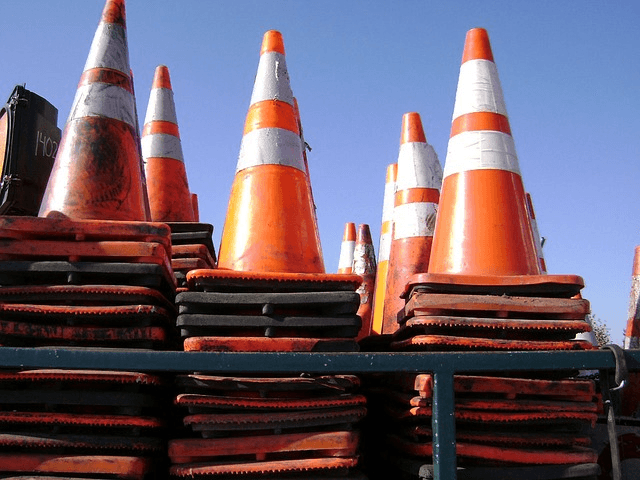
Highways are the backbone of transportation infrastructure, connecting cities, states, and countries. However, they also pose significant risks for drivers, passengers, pedestrians, and construction crews. To minimize accidents, injuries, and fatalities, highway safety equipment plays a crucial role in ensuring safe and efficient traffic flow, especially in construction zones, detours, and high-traffic areas.
This article explores the most common types of highway safety equipment, how they are used, and why they are essential for protecting lives and reducing road hazards.
1. Traffic Cones and Delineators
Purpose:
Traffic cones and delineators are temporary devices used to guide or warn drivers in construction or hazard zones. They’re often bright orange with reflective stripes to maximize visibility.
Common Uses:
-
Channeling vehicles through lane shifts
-
Marking closed lanes
-
Alerting drivers to work zones or roadside hazards
-
Separating lanes during temporary conditions
Why They’re Important:
These lightweight yet effective pieces of highway safety equipment help reduce confusion and keep traffic moving safely during temporary changes.
2. Barricades and Barriers
Purpose:
Barricades provide physical and visual separation between work zones and traffic, while barriers offer additional crash protection.
Types:
-
Type I, II, and III barricades (used for road closures and detours)
-
Water-filled barriers (easy to transport, filled on-site)
-
Concrete barriers (permanent or semi-permanent protection)
-
Steel crash barriers (designed to redirect vehicle impact)
Common Uses:
-
Road closures and detours
-
Long-term construction zone protection
-
Pedestrian walkways and bike lane separation
Why They’re Important:
Barricades and barriers provide strong, visible warnings and impact protection for both motorists and workers.
3. Guardrails and End Terminals
Purpose:
Guardrails are permanent fixtures that prevent vehicles from leaving the roadway in dangerous areas like curves, steep slopes, or bridge edges.
Common Uses:
-
Along highways, ramps, and bridges
-
In areas prone to rollovers or off-road collisions
-
To protect pedestrians or structures near the road
Why They’re Important:
As one of the most critical forms of highway safety equipment, guardrails absorb and deflect crash impact, significantly reducing injury severity.
4. Crash Cushions (Impact Attenuators)
Purpose:
Crash cushions absorb the energy of a colliding vehicle to reduce the severity of the impact. They’re often installed at the ends of barriers, medians, or fixed structures.
Common Uses:
-
Gore areas (where highways split)
-
Bridge ends and toll booths
-
Work zone entry points
Why They’re Important:
These safety devices prevent vehicles from slamming into hard, immovable objects, potentially saving lives and reducing injuries.
5. Rumble Strips and Pavement Markings
Purpose:
These passive safety features are installed directly on road surfaces to alert drivers when they drift out of their lane or approach a hazard.
Common Uses:
-
Edge line and center line rumble strips to reduce lane departure crashes
-
High-visibility pavement markings for night or wet-weather driving
-
Advance warning of stop signs, pedestrian crossings, or sharp curves
Why They’re Important:
Simple and cost-effective, these forms of highway safety equipment improve awareness and response times for drivers.
6. Signage and Message Boards
Purpose:
Signs and message boards provide drivers with real-time information, such as speed limits, lane closures, detours, or emergency alerts.
Types:
-
Temporary road signs (construction ahead, flagger ahead, etc.)
-
Variable message signs (VMS)
-
Portable changeable message signs (PCMS)
Common Uses:
-
Highway construction or maintenance notifications
-
Incident management and traffic rerouting
-
Public safety announcements
Why They’re Important:
Clear communication is key to highway safety. These devices guide driver behavior and reduce confusion.
7. Lighting and Beacons
Purpose:
Proper illumination ensures that hazards, equipment, and workers are visible during low-light conditions.
Common Uses:
-
Lighting towers for night construction
-
Flashing beacons on signs or barriers
-
Work vehicle and equipment warning lights
Why They’re Important:
Lighting-related highway safety equipment drastically improves visibility, especially during nighttime or foggy conditions.
8. Speed Control Devices
Purpose:
Speed control measures help manage driver speed in sensitive or hazardous areas.
Types:
-
Radar speed signs
-
Speed bumps (more common on city roads or approaches to highway construction)
-
Temporary speed limit signs
Common Uses:
-
Work zones
-
High pedestrian traffic areas
-
School zones adjacent to highways
Why They’re Important:
Lower speeds reduce stopping distance, give drivers more time to react, and improve overall safety for everyone on or near the highway.
9. Flagging Equipment and Personal Protective Gear
Purpose:
Flaggers direct traffic in and around construction zones. Their safety depends on both their training and their gear.
Essential Equipment:
-
High-visibility vests and helmets
-
Handheld STOP/SLOW paddles
-
Two-way radios and whistles
Why They’re Important:
Human-controlled traffic flow remains critical in areas where automation isn’t possible. Flaggers equipped with proper highway safety equipment are essential to on-site control.
10. Smart Traffic Management Systems
Purpose:
Advanced technology is increasingly used to monitor and manage highway safety in real time.
Components Include:
-
Traffic cameras and sensors
-
Automated traffic counters
-
Connected vehicle infrastructure
Why They’re Important:
These systems can predict and prevent congestion, notify drivers of issues ahead, and improve emergency response times.
Conclusion
From cones and guardrails to smart signage and crash cushions, highway safety equipment plays an essential role in reducing risks for both motorists and roadway workers. Each piece serves a specific purpose—whether it’s guiding traffic, preventing collisions, or alerting drivers to upcoming hazards.